Validation funding
Usually, research results are still a large step away from a concrete product. The market relevance of the technology, process or software must be validated. Investments are necessary that are not usually covered by the research funding lines. This is where so-called validation funding comes in. We consult and support you in the following funding programmes.
Possibility of funding through the Helmholtz Validation Fund (HVF)
Program description
The Helmholtz Validation Fund (HVF) is a cross-centre financing instrument using resources from the Initiative and Networking Fund and is intended to close gaps between:
- scientific findings and their marketable applications,
- public research and private investment.
By reducing the funding gap, a bridge between idea and application should be built. Thanks to the Helmholtz Validation Fund, research results can be further developed so that value can be increased and commercialisation achieved. To do this, there is often a lack of validation - i.e. a document that makes the results interesting for business partners, for example by
- a proof of general applicability,
- the testing of a suitable production process,
- a preclinical trial.
General information on the HVF can be found on the following overview page:
www.helmholtz.de/transfer/technologietransfer/transferinstrumente/helmholtz_validierungsfonds/
Forward:
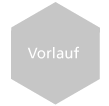 |
Funding will be provided for projects that can increase the value of an invention or the commercialization chances of a product or service through a validation phase. Thus, validation is a qualified proof that the research results have practical and commercial relevance. Such proof of technical feasibility or commercial potential should lead to an increase in attractiveness, making the validated idea interesting for business partners or for potential investors. In addition to the formal criteria, the following conditions must be met in order to receive a grant from the validation fund:
|
Proposal:
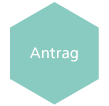 |
Validation projects from the Helmholtz Centres are selected in a two-stage application procedure. Pre and main proposals are evaluated by independent reviewers, whereby the pre-proposal is no longer mandatory but recommended. Pre-proposals consisting of five pages can be submitted at any time. No later than two months after submission of the pre-proposal, either a reasoned rejection of the pre-proposal or admission to the main proposal is granted. In the case of admission to the main application, the application form must include a detailed project plan including milestone and finance plan on a maximum of 20 pages. A written confirmation from the Helmholtz Centre that the application is supported and that the applicant's own share is guaranteed must be enclosed. The validation projects are selected by a decision board consisting of external experts. If you are interested in submitting an application, please contact us. We will consult and support you in the preparation, elaboration and submission. |
Approval:
 |
The plausibility check of pre-proposals includes the following groups of criteria, which are evaluated by independent experts:
In the phase of main proposals, the criteria group "project management" will also be included in the assessment. If the application process is successful with a positive decision by the decision board, a funding agreement is concluded between the Helmholtz Association and the Helmholtz Centre. The grant is awarded as a fixed amount financing and is repayable on a contingent basis. FIMA (third-party funds) will support you in the financial processing, SU Law will assist you in the case of any necessary cooperation agreements. IRM will be happy to put you in touch with the right contact persons. |
Duration:
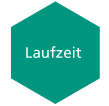 |
The duration of a project can be up to two years. The projects supported by the validation fund are bound to a milestone planning. The fulfilment of the milestones is a prerequisite for the request for funds, which is made in corresponding tranches of usually three to six months. The financial processing during the term of the project is supervised by FIMA (third-party funds), and the innovation management will be happy to support you in organisational matters if desired. |
Conclusion:
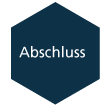 |
Upon completion of the validation project, immediate commercialization must be possible. To this end, the various exploitation options must be examined in the final phase of the project in order to be able to realise commercialization via a cooperation partner or a licence agreement with an economic partner or via a spin-off company following funding. FIMA (third-party funds) will be responsible for the financial processing of the final report. If desired, the innovation management will be happy to support the project management in questions regarding the final report and the subsequent commercialization. |
Funding opportunity through the validation of the technological and societal innovation potential of scientific research - VIP+
Program description
The funding measure "Validation of the technological and societal innovation potential of scientific research - VIP+" invites scientists and scholars from all disciplines to take the first step from the world of research towards economic added value or societal application.
The VIP+ funding measure supports scientists in examining and demonstrating the innovation potential of research results and in developing possible areas of application. In this way VIP+ creates the conditions for the further development of research results into innovative products, processes or services.
At the same time, the risk for third parties to invest in further development is reduced. VIP+ funding thus goes beyond purely scientific issues. It serves to bridge the gap to subsequent exploitation or application.
With VIP+, these further research and development activities will be supported in projects of up to three years with up to 1.5 million euros. The funding measure, which is open to all topics, is aimed at researchers from universities, non-university research institutions jointly financed by the Federal Government and the Länder and federal institutions with R&D tasks. Applications can be submitted on an ongoing basis.
Further information can be found at https://www.bmbf.de/de/2391.php.
Forward:
 |
Funding in VIP+ takes place exclusively in the so-called validation phase. This follows directly after the discovery phase, in which promising research results with high innovation potential have been identified. Fundamental research questions no longer exist at this point. Another prerequisite is that the valorization or social application is still associated with such high risks that a financial participation of third parties cannot be expected. In other words, no industrial partner should or may be involved in the application process, but other universities or research institutions can certainly be involved. The aim of the validation phase is to test, prove and assess this innovation potential and to open up possible areas of application. Details on this can be found in the detailed guidelines for submitting proposals. https://www.bmbf.de/pub/Leitfaden_zur_Antragstellung.pdf |
Proposal:
 |
Before submitting a full proposal, it is possible to submit a short, maximum two-page outline to have the project management organization check the basic eligibility of the project. For this purpose, the project management organization VDI/VDE Innovation + Technik GmbH has developed some guiding questions. A full proposal comprises a maximum of 25 pages and should cover the following points: 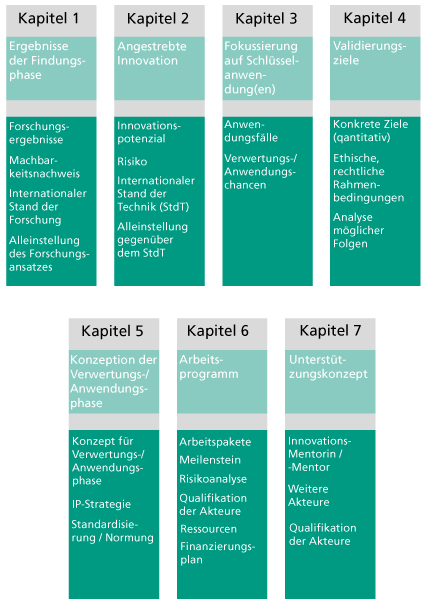
You can find the complete guidelines for application here: |
Approval:
| FIMA (third-party funds) will support you in the financial processing, SU Law will assist you in the case of any necessary cooperation agreements. However, DE IRM will be happy to continue to support you. |
Duration:
 |
The financial processing during the term of the project is supervised by FIMA (third-party funds), DE IRM will be happy to assist with organisational issues if desired. |
Closure:
 |
The financial processing during the closure is supervised by FIMA (third-party funds), DE IRM is happy to assist with questions regarding the final report, if desired. |
Funding via the KIT innovation fund
Program description
The innovation fund is an internal investment program of KIT for technology transfer projects in institutes. Together with an industrial partner, the objective is to further develop scientifically sound ideas with market-relevant potential into a commercializable product that can then be produced and distributed by the industrial partner. The innovation fund is financed by returns from licensing income. The basis of the innovation fund principle is therefore a "contract between generations": Projects receive funding with the aim of generating returns for the scientists, the institutes and the innovation fund. These can in turn be used quickly and flexibly to fund new projects.
The fund is not tied to a specific programme or thematic area, nor to the duration, the amount of the budget or a deadline.
The only condition for an investment from the fund is the willingness of an industry partner to participate in the project both technically and financially by bearing the costs incurred by the partner itself. The entire project costs of the institute will be pre-financed by the fund and should be refinanced after the market introduction through a share in the later turnover (ROI) of the company. The higher the later market potential of the product idea and thus the expected ROI is estimated, the more can be invested in product development in advance.
Further information on the KIT innovation fund is available at www.kit-neuland.de.
Forward:
 |
TT projects aim to create innovations, i.e. to further develop a scientific idea with 'proof of concept' or an existing prototype into a product that is commercialised by the industrial partner. The prerequisite is an idea in the institutes. IRM will assist you in the search for possible applications, market potential and a suitable industrial partner. Together with the industrial partner, exploratory talks are held to clarify whether the expense of product development is in a healthy relationship to the expected later sales after market introduction and whether an acceptable ROI can be generated for the KIT that at least covers the costs from the KIT innovation fund. |
Proposal:
 |
In coordination with IRM, a TT application can be submitted. It comprises approx. 10 pages and should contain the following items:
To obtain a guide to application, please contact the contact persons. |
Approval:
| After a positive decision by the Commission, contract negotiations with the industrial partner will take place under the leadership of IRM with the aim of concluding a cooperation and licensing agreement. The financial management of the TT projects is also carried out by IRM. |
Duration:
 |
TT projects are supported by IRM. Questions regarding changing specifications, modifications, work packages or markets can be discussed and solved directly and in mutual agreement with the industrial partner. |
Completion:
 |
IRM is responsible for the financial management during the TT project. IRM will also manage the ROI with the industrial partner in the subsequent marketing phase. |
